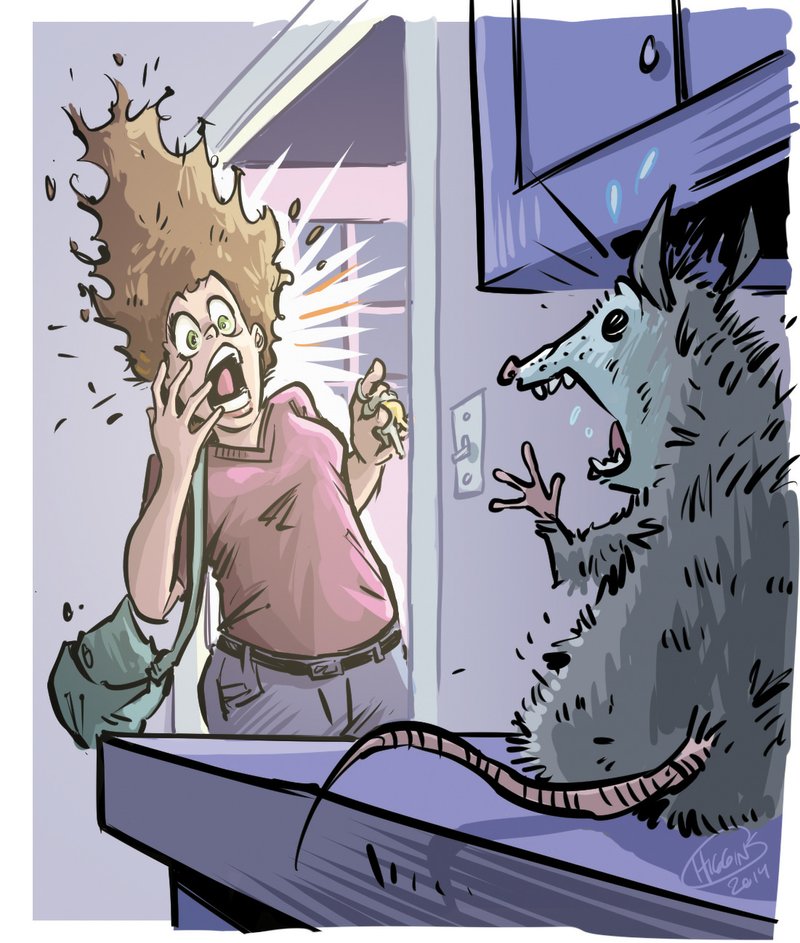My neighbor came home a few nights ago to find an opossum playing on her kitchen counter. While the creature was small and a bit on the cute side, its presence was nonetheless startling. It's hard to say who was more startled, my neighbor or her uninvited guest -- or guests, as she and her husband later discovered. It seems six young opossums have been living under her house and regularly visiting the kitchen.
The opossums, which are nocturnal marsupials, apparently found their way into my neighbors' house through an opening in the foundation that was obscured by a recently built deck. The animals then crawled into the kitchen through a small hole that provides access for a natural gas line behind the stove. The hole is only about 2 inches in diameter, small but still large enough for a determined varmint to squeeze through.
Opossums, along with raccoons, squirrels and other wild creatures, don't need an invitation or even much of an opening to be able to wend their way into people's homes. They come in through pet doors, vents, crawl spaces, cracks in the soffit at the roof line, or through holes near appliances and under sinks, says Billy Grace, director of North Little Rock Animal Control Services.
Why do the animals come in? Wildlife in urban settings have learned that where there are people, there's also food and shelter, Grace explains. They've adapted easily to co-existence with the humans who have encroached upon their natural habitats. Humans, however, don't appreciate wild animals encroaching upon their habitats.
So what do you do when you find a wild animal in your house? First, Grace and other animal control professionals say, don't pick it up. Second, as your heart recovers from its recent shock, call your local animal control department or a professional urban wildlife removal service for advice and assistance.
North Little Rock's animal control workers will come to the aid of a homeowner if a wild critter invites himself in, Grace says. If they can't catch the animal, they'll provide a humane trap so the owners can capture the animal alive. An animal control officer will then pick up the trapped animal so it can be released into the wild.
Not all animal services departments have the same policy as North Little Rock, but even if they don't provide physical assistance, they'll usually offer advice.
Rita Cavenaugh, manager of Maumelle's Animal Services department, says her department can't help people remove wild animals from their houses, but often getting rid of one is simply a matter of leaving an outside door open so that the animal can leave on its own. Before doing so, secure pets in another area of the house and close doors to other rooms to prevent the wild animal from "escaping" into the house instead of going out.
The Opossum Society of the United States (opossumsocietyus.org) also subscribes to the open-door approach, but says it helps to provide the animal incentive to leave by creating a trail of dry pet food that extends beyond the threshold. Let the animal move at its own pace. If you try to shoo the opossum out with a broom, it will become frightened and "play possum" or freeze in place. When the opossum is outside, simply shut the door.
A trail of cat food would get a raccoon's attention, too. Grace says that his department baits live animal traps with cat food when trying to capture raccoons. Raccoons -- along with opossums, rats and squirrels -- have gotten used to eating cat food that people put outdoors for pets and stray cats.
The animal control officers pointed out that their advice doesn't apply in cases where a skunk or bat has gotten inside a house. Because both species are rabies carriers, homeowners should always call for assistance instead of trying to deal with these critters themselves.
Grace says homeowners can prevent urban wildlife from getting in by making sure holes in the foundation, attic, roof and crawl spaces -- basically anywhere there's outside access -- are covered. Another way people can help themselves is by not leaving pet food outside. If you want to feed outdoor cats, leave the food out for a short period, then remove it.
As for my neighbors, they're trapping and relocating their furry intruders. Kitchen closed.
Family on 06/04/2014
